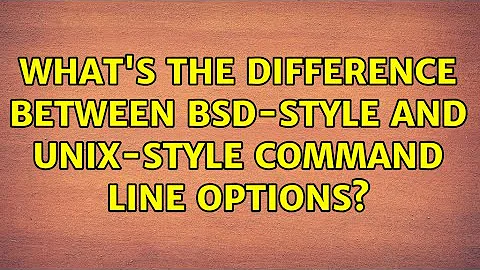What's the difference between BSD-style and Unix-style command line options?
Solution 1
It depends on the program. ps is the one that you encounter the most often - somebody who grew up in a BSD environment will type ps auwwx while somebody who grew up in a System V environment will type ps -ef even though ps these days supports both types of options now.
Solution 2
Much and little, see:
Also worry about:
Case sensitivity e.g.
mailx -R [email protected] ..... # GNU/Linux
mailx -r [email protected] ..... # Unix
Options required in some flavours but not others e.g.
/usr/bin/echo -e "This\nis a\n test" # GNU/Linux
/bin/echo "This\nis a\n test" # Unix
Additional options e.g.
last -y # BSD - include year
last -a # GNU/Linux - include hostname
Solution 3
One of the major differences across the platform is positional arguments. Most of the command line utilities will enforce that flags come before positional arguments. That is, on a GNU system, the following is fine:
ls / -la
On BSD, these are typically not valid. Obviously, this isn't the extent of the differences between the two, but its one of the differences that drives me up the wall when I switch between them.
Related videos on Youtube
Eugene Yarmash
By day, a software engineer. By night, also a software engineer.
Updated on September 17, 2022Comments
-
Eugene Yarmash over 1 year
I tried to google it but to no avail. Can anybody help me with this?




